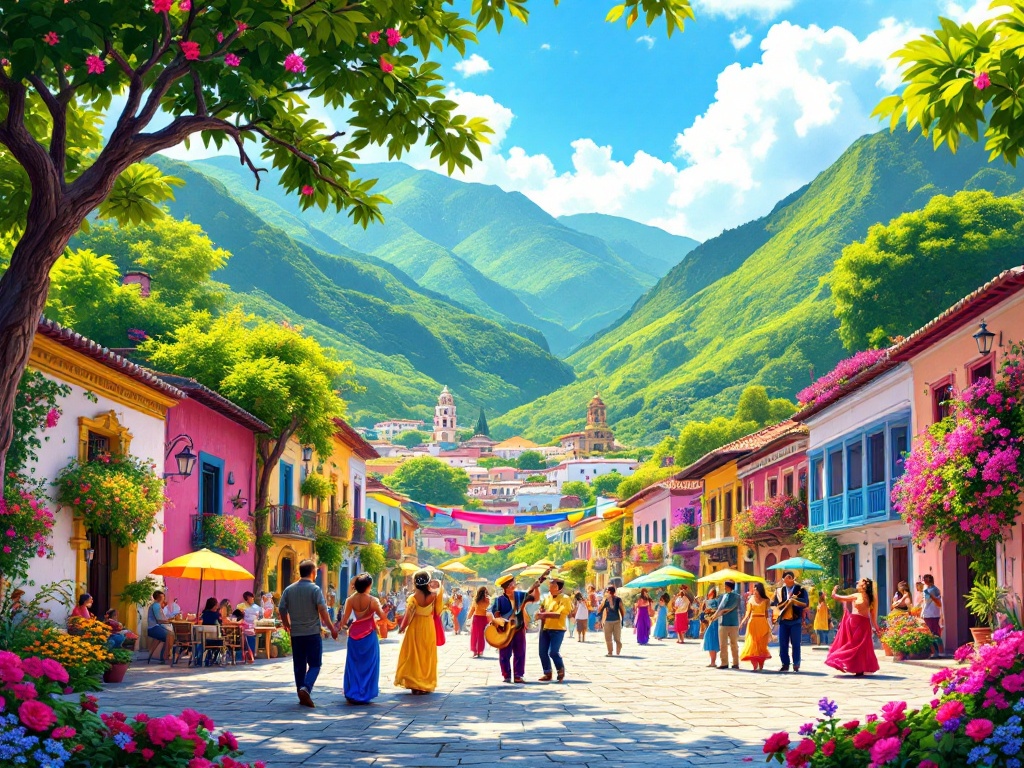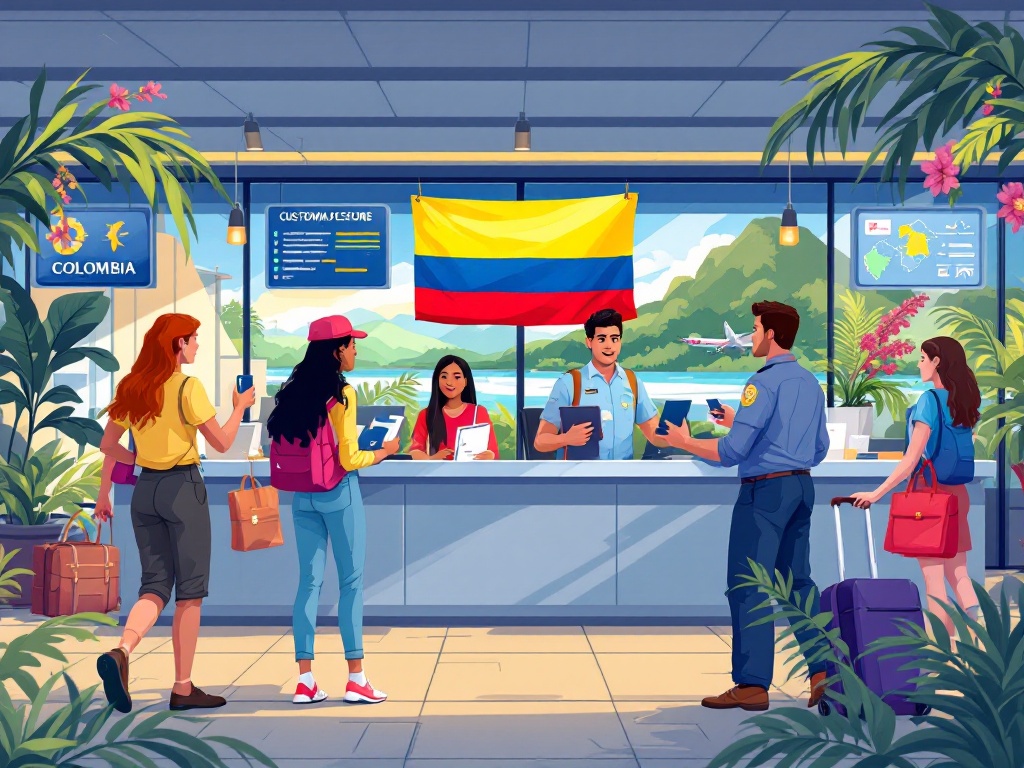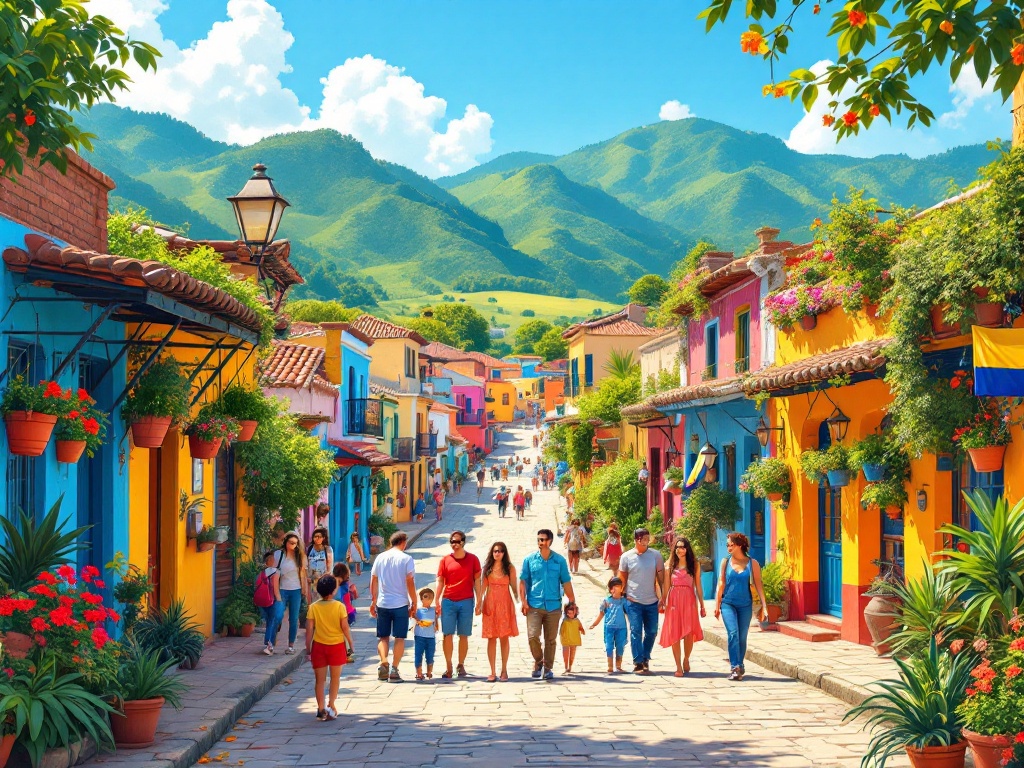Travel to Colombia - Essential Information

Colombia has transformed into one of South America's most exciting destinations, offering travelers a perfect blend of vibrant culture, stunning landscapes, and warm hospitality. This comprehensive guide provides essential information for planning your trip to Colombia.
Important Note
All travelers entering or leaving Colombia must complete the Check Mig Colombia form between 72 hours and 1 hour before their flight. This mandatory immigration form helps streamline the entry and exit process.
Learn About Check Mig
Entry Requirements
Passport Requirements
All travelers must present a valid passport that is:
- Valid for at least six months beyond the date of entry
- In good condition with no damage to the identification page
- Contains at least one blank page for entry stamps
Visa Information
Visa requirements for Colombia vary depending on your nationality:
- Visa-exempt travelers: Citizens of many countries, including the United States, Canada, Australia, the United Kingdom, and most European Union countries, can enter Colombia without a visa for stays of up to 90 days.
- Visa-required travelers: Citizens of certain countries must obtain a visa before traveling to Colombia. Check with the Colombian embassy or consulate in your country for specific requirements.
Even if you are exempt from needing a visa, you must still complete the Check Mig Colombia form before your trip.
Tourist Stay Extension
If you wish to stay in Colombia for more than 90 days as a tourist, you can apply for an extension of up to an additional 90 days (for a maximum total of 180 days per calendar year) through Migración Colombia.
Customs Regulations
When entering Colombia, be aware of the following customs regulations:
- Currency: You may bring up to $10,000 USD (or equivalent) without declaration. Amounts exceeding this limit must be declared.
- Prohibited items: Illegal drugs, unauthorized weapons, and endangered species products are strictly prohibited.
- Restricted items: Some medications, food products, and plants may be restricted or require permits.
Traveling with Minors
If you are traveling with children under 18 years of age, additional requirements apply:
- Children must be registered on the Check Mig form
- If a child is traveling with only one parent or with someone who is not their legal guardian, additional documentation may be required:
- Notarized permission from the absent parent(s)
- Death certificate if one parent is deceased
- Court documents if one parent has sole custody
Important: Colombian authorities take child trafficking very seriously. Children who do not meet exit requirements may be detained by local authorities.
Apply for Check Mig Colombia
Experience the Beauty and Culture of Colombia
From the vibrant streets of Cartagena to the lush coffee regions and the Amazon rainforest, Colombia offers unforgettable experiences for every traveler.
Health Requirements
Vaccinations
While there are no mandatory vaccinations for most travelers to Colombia, the following are recommended:
- Yellow Fever: Recommended for travelers visiting areas below 2,300m in elevation, including national parks and the Amazon region
- Hepatitis A and B: Recommended for most travelers
- Typhoid: Recommended for most travelers, especially those visiting smaller cities or rural areas
- Tetanus-diphtheria: Ensure your routine vaccinations are up to date
Consult with a travel medicine specialist at least 4-6 weeks before your trip to get personalized advice based on your health history and travel plans.
Health Insurance
Comprehensive travel health insurance is strongly recommended for all visitors to Colombia. Ensure your policy covers:
- Medical emergencies and hospitalization
- Medical evacuation
- 24-hour emergency assistance
Keep a copy of your insurance policy and emergency contact numbers with you at all times during your trip.
Medications
If you take prescription medications:
- Bring an adequate supply for your entire trip
- Keep medications in their original, labeled containers
- Bring a copy of your prescriptions and a letter from your doctor explaining your medical condition and medications
Health Risks in Colombia
Be aware of the following health risks:
- Altitude sickness: Bogotá sits at 2,640 meters (8,660 feet) above sea level. Some visitors may experience altitude sickness symptoms.
- Mosquito-borne diseases: Zika, dengue, and malaria are present in some regions. Use insect repellent and take appropriate precautions.
- Food and water safety: Drink bottled or purified water and eat fully cooked foods to avoid traveler's diarrhea.
Safety Tips
Colombia has made significant strides in improving safety for tourists in recent years. However, as with travel to any destination, it's important to stay informed and take precautions to ensure a safe and enjoyable trip.
General Safety Advice
- Stay aware of your surroundings, especially in crowded areas and tourist spots
- Avoid displaying signs of wealth such as expensive jewelry or electronics
- Use ATMs located inside banks or shopping centers during daylight hours
- Keep a photocopy of your passport separate from the original
- Register with your country's embassy or consulate in Colombia
Safe Areas and Regions
Most tourist areas in Colombia are safe to visit, including:
- Bogotá's tourist and business districts (La Candelaria, Zona Rosa, Usaquén)
- Cartagena's walled city and tourist areas
- Medellín's El Poblado and Laureles neighborhoods
- Santa Marta and Tayrona National Park
- The Coffee Region (Eje Cafetero)
Areas to Exercise Caution
Some areas require additional caution or should be avoided:
- Remote rural areas, particularly near borders
- Certain neighborhoods in major cities (research before your trip)
- The Darién Gap region bordering Panama
Transportation Safety
For safe transportation in Colombia:
- Use registered taxis or ride-sharing apps rather than hailing taxis on the street
- On long-distance buses, keep valuables with you rather than in overhead compartments
- Consider flying between major cities instead of overnight bus travel
Emergency Contacts
Keep these emergency numbers handy:
- National Emergency Number: 123
- Tourist Police: 127
- Your Country's Embassy or Consulate in Colombia
Transportation in Colombia
Getting Around Cities
Major Colombian cities offer various transportation options:
- Taxis and Ride-sharing: Apps like Uber, Didi, and Cabify operate in major cities. Yellow taxis are also available but should be called through a dispatch service rather than hailed on the street.
- Public Transportation: Bogotá has the TransMilenio bus rapid transit system, while Medellín has an efficient metro system including cable cars that connect hillside neighborhoods.
- Walking: Many tourist areas in Colombian cities are pedestrian-friendly, especially in historic centers.
Intercity Travel
To travel between cities in Colombia:
- Domestic Flights: The most efficient way to travel long distances. Airlines like Avianca, LATAM, and Viva Air offer frequent connections between major cities.
- Buses: Extensive network of intercity buses with varying levels of comfort and price. Companies like Bolivariano and Expreso Brasilia offer premium services.
- Car Rental: Available in major cities, but driving in Colombia can be challenging due to mountainous terrain and varying road conditions.
Currency and Money
Colombian Peso (COP)
The official currency of Colombia is the Colombian Peso (COP). Banknotes come in denominations of 1,000, 2,000, 5,000, 10,000, 20,000, 50,000, and 100,000 pesos.
Money Exchange
For the best exchange rates:
- Exchange money at banks or official exchange offices (casas de cambio)
- Avoid exchanging money at airports or hotels where rates are typically less favorable
- ATMs are widely available in cities and tourist areas and often offer competitive rates
Credit Cards and ATMs
Credit cards are widely accepted in hotels, restaurants, and larger stores in urban areas:
- Visa and Mastercard are most commonly accepted
- Inform your bank of your travel plans to prevent your card from being blocked for suspicious activity
- Always have some cash on hand, especially when traveling to smaller towns or rural areas
Tipping
Tipping practices in Colombia:
- Restaurants: A 10% service charge (propina) is often included in the bill. If not, a 10% tip is customary for good service.
- Taxis: Tipping is not expected, but rounding up the fare is appreciated.
- Tour guides: 10-15% of the tour cost is appropriate for good service.
Communication and Internet
Mobile Phones
To stay connected in Colombia:
- Check if your home carrier offers international roaming in Colombia
- Purchase a local SIM card from providers like Claro, Movistar, or Tigo (you'll need an unlocked phone)
- Local SIM cards can be purchased at airports, shopping centers, or provider stores (bring your passport for registration)
Internet Access
Internet connectivity in Colombia:
- Most hotels, hostels, cafes, and restaurants offer free Wi-Fi
- Internet speeds are generally good in major cities
- Connection may be limited in remote areas
Useful Apps for Colombia Travel
Consider downloading these apps before your trip:
- Transportation: Uber, Didi, Cabify, Easy Taxi
- Navigation: Maps.me, Google Maps (download offline maps)
- Translation: Google Translate, SpanishDict
- Safety: TripWhistle Global SOS
Weather and Climate
Colombia's climate varies greatly depending on altitude rather than season:
Climate Zones
- Hot Zone (Tierra Caliente): 0-1,000m elevation, average temperature 24°C (75°F) and above. Includes coastal areas like Cartagena, Santa Marta, and the Amazon region.
- Temperate Zone (Tierra Templada): 1,000-2,000m elevation, average temperature 18-24°C (64-75°F). Includes Medellín and the Coffee Region.
- Cool Zone (Tierra Fría): 2,000-3,000m elevation, average temperature 12-18°C (54-64°F). Includes Bogotá.
Rainy Seasons
Colombia generally has two rainy seasons:
- April to June
- October to November
However, rainfall patterns vary by region, so research the specific areas you plan to visit.
What to Pack
Due to the varied climate, pack accordingly:
- Lightweight, breathable clothing for coastal and lowland areas
- Layers for highland areas like Bogotá
- Rain jacket or umbrella regardless of when you visit
- Sunscreen, sunglasses, and a hat for sun protection
Cultural Etiquette
Greetings
Colombians are warm and friendly people:
- A handshake is the standard greeting in business settings
- Among friends, women often greet with a kiss on the cheek
- Men may greet male friends with a handshake and pat on the shoulder
Language
Spanish is the official language of Colombia:
- Learning basic Spanish phrases is highly appreciated
- English is spoken in tourist areas and by younger Colombians, but less so in rural areas
- Colombian Spanish is considered one of the clearest and easiest to understand for learners
Dining Etiquette
When dining in Colombia:
- Keep your hands visible on the table, not in your lap
- Wait for the host to say "buen provecho" (enjoy your meal) before starting
- It's polite to finish everything on your plate
Dress Code
Colombians generally dress well and take pride in their appearance:
- In cities, smart casual attire is appropriate for most occasions
- Avoid wearing shorts in urban areas (except at the beach)
- For upscale restaurants and clubs, more formal attire may be expected


